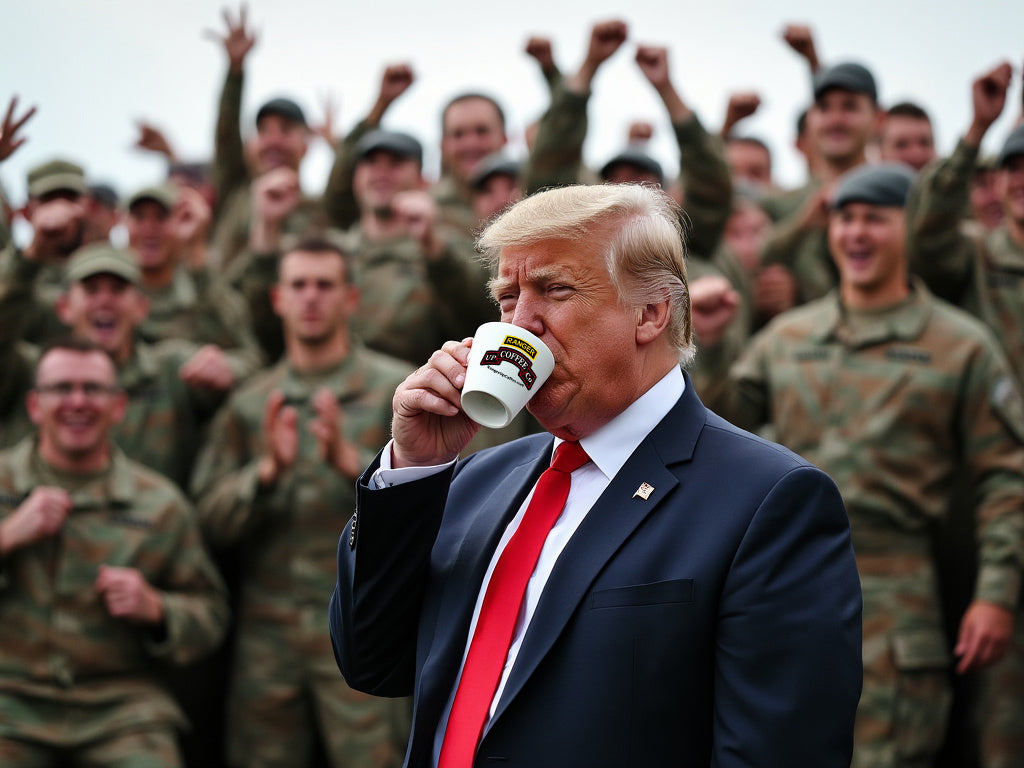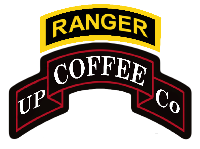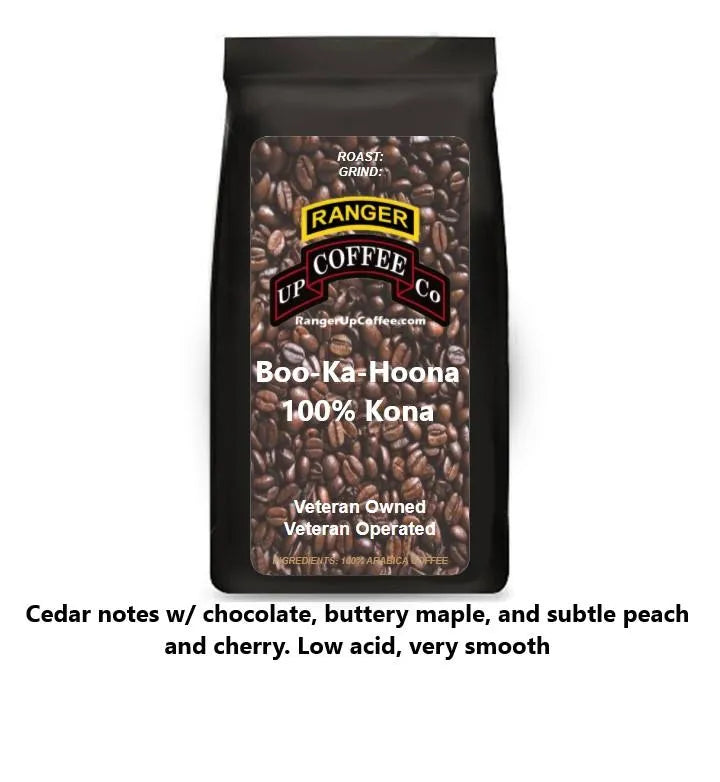Boo-Ka-Hoona 100% Kona Fancy Coffee
- Only 2 left in stock!
Description
Why Boo-Ka-Hoona 100% Kona Fancy Grade Coffee?
While I was stationed near Eglin Air Force Base in Florida, my family would drive by a waterpark near the Destin area called Big Kahuna's. My daughter who was 5 years old at the time would get extremely excited when passing it and yell out Boo-ka-hoona. We made many attempts to correct her through our time there but she was adamant in the parks pronunciation and has become a family joke to this day, nearly 20 years later.
History of Kona Coffee
The coffee plant was brought to the Kona district in 1828 by Samuel Reverend Ruggles from Brazilian cuttings. English merchant Henry Nicholas Greenwell moved to the area and established Kona coffee as a recognized brand later in the 19th century. The former Greenwell Store and Kona Coffee Living History Farm have since become museums.
In other parts of the Hawaiian islands, it was grown on large plantations, but the 1899 world coffee market crash caused plantation owners to lease land to their workers. Most were from Japan, brought to work on sugarcane plantations. They worked their leased parcels of between 5 and 12 acres (49,000 m2) as family concerns, producing large, quality crops.
The tradition of family farms continued throughout Kona. The Japanese-origin families have been joined by Filipinos, mainland Americans, and Europeans. There are approximately 800 Kona coffee farms, with an average size of less than 5 acres (20,000 m2). In 1997 the total Kona coffee area was 2,290 acres (9 km2) and green coffee production just over two million pounds.
Growing and processing
Kona coffee blooms in February and March. Small white flowers known as "Kona snow" cover the tree. Green berries appear in April. By late August, red fruit, called "cherry" because of resemblance to a cherry, start to ripen for picking. Each tree, hand-picked several times between August and January, provides around 15 pounds of cherry, which result in about two pounds of roasted coffee.
Within 24 hours of picking, the cherry is run through a pulper. The beans are separated from the pulp and then placed overnight in a fermentation tank. The fermentation time is about 12 hours at low elevation or 24 at higher elevation. The beans are rinsed and spread to dry on a hoshidana or drying rack. Traditional hoshidanas have a rolling roof to cover the beans in rain. It takes seven to 14 days to dry beans to an optimal moisture level of between 10 and 13% (by Hawaii Department of Agriculture regulations: 9.0-12.0%). Too much moisture content in coffee allows the growth of ochratoxin A, a harmful mycotoxin, hazardous to human health. From here, the beans are stored as "pergamino" or parchment. The parchment is milled off the green bean prior to roasting or wholesale.
Kona coffee beans are classified by law according to seed. Type I beans consist of two beans per cherry, flat on one side, oval on the other. Type II beans consist of one round bean per cherry, otherwise known as peaberries. Further grading of these two types of beans depends on size, moisture content, and purity of bean type. The grades of type I Kona coffee are 'Kona Extra Fancy', 'Kona Fancy', 'Kona Number 1', 'Kona Select', and 'Kona Prime'. The grades of type II Kona coffee are 'Peaberry Number 1' and 'Peaberry Prime'. Also, a lower grade of coffee, called 'Number 3' (or 'Triple X') can not legally be labeled as "Kona" but as 'Hawaiian' coffee. Any bean grade below Number 3 is considered 'Offgrade' coffee and can only be labeled as generic coffee. Not an official classification grade, but commonly used by Kona coffee farmers, is the 'Estate' grade where the various grades are not being separated from each other. Only the 'Number 3' and 'Offgrade' beans are being sorted out.
Kona blends
Because of the rarity and price of Kona coffee, some retailers sell "Kona Blends". These are not a combination of different Kona coffees, but a blend of Kona and Colombian, Brazilian, or other foreign coffees. Usually they contain only the minimum required 10% Kona coffee and 90% cheaper imported beans.
Current Hawaiian law requires blends to state only the percentage of Kona coffee on the label but not any other coffee origins. There is no matching Federal law. Some retailers use terms such as 'Kona Roast' or 'Kona Style'. To be considered authentic Kona coffee, the state of Hawaii's labeling laws require the prominent display of the words "100% Kona Coffee".
Cup Characteristics:
Sweet, full body, Bright, clean, cedar notes w/ chocolate, buttery maple and subtle peach and cherry. Low acid and very smooth cup
Grinds:
Coarse: Best for cold brews or low pressure brewers like the French or Aero Press where the grounds will submerged in water over time.
Medium: Best for electric drip brewers (Coffee machines) or pour over coffee (V60 etc.) where the water will pass through the grounds.
Fine: A fine grind best for espresso machines. If you prefer a stronger extraction with more bitter taste, you may prefer this grind for your electric drip brewer or pour over. CAUTION: This fine of grind may cause your electric drip brewer grounds basket to overflow**
Extra Fine: Very fine and clumpy, mainly used for Greek or Turkish brewing styles of extraction
Couldn't load pickup availability

Do you ship to my country?
We only ship within the United States. This ensures that our coffee is fresh when you receive it.
What's so special about your K-Cups?
99% of coffee roasters use old coffee to fill K-Cups. The reason is the pod is sealed so no gasses can escape and would explode. Our K-cups are able to release gasses so we can roast your order and immediatly fill the pods.
How long to roast & ship my order?
All orders received prior to 1700CST (5pm Central) are roasted that evening and shipped early the next morning. The exception is any day that the next day is not a shipping day ie; Holidays, Sundays etc.
Do you donate to charity?
Every tip, donation and 10% of our profits are donated to Veteran Homeless charities like Tunnels to Towers Homeless Veteran Program.



